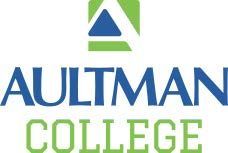College is an exciting time for families. For many young adults, making the transition from living under their parent’s roof to venturing out on their own and make their own decisions is exhilarating, stressful, fun and anxiety filled. The experience often includes meeting new friends, learning about different cultures and managing expectations or reaching out for help from professors.
For some students, working their way through college while attending a non-residential campus or returning to school while supporting a family presents its own challenges.
Child and Adolescent Behavioral Health (C&A), in partnership with Stark County Mental Health and Addiction Recovery (StarkMHAR), Coleman Crisis Center and Stark County Adult Led Prevention (SCALP) are presenting the fourth annual Collegiate Self-Care Fairs on Stark County’s six college campuses and universities. The fair is funded by College Collaborative Grant, which is part of the Ohio Program for College Safety and Mental Health.
Collegiate Partners
Partnering schools for this important effort include Aultman College, Kent State University -Stark, Malone University, Stark State College, the University of Mount Union and Walsh University. C&A and its partners will spend one-day, two hours on each campus providing self-care tips to college-age students. The schedule of events is:
- 5 – Walsh University
- 6 – Kent State University -Stark Campus
- 11- Aultman College
- 18 – Malone University
- 19 – Stark State College
- 2 – University of Mount Union
Students who choose to participate in the fair will receive a self-care bag filled with the following items: a stress ball; a Gatorade stick; a fidget toy; a motivation chip; a positive-affirmation sticker; information on time management, exercise, nutrition and getting proper sleep; and suicide prevention information. Each item in the bag relates to self-care.
- Stress ball – studies indicate that when you squeeze a stress ball, your nerves and muscles stimulate and contract which makes them smaller
- Gatorade sticks - students will receive a Gatorade powder stick to mix with water. Following an exercise routine, Gatorade helps restore the lost electrolytes and keeps a person hydrated during intense activity
- Fidget toy – individuals who are experiencing anxiety may fidget or make small movements when they are feeling anxious, restless, impatient or nervous. Fidget toys give these movements an outlet and can help calm a person’s nerves, relieve stress and serve as a distraction in an overstimulating environment
- Motivation chips/positive-affirmation stickers – these messages provide encouragement for students and reminders for positive self-care
- Suicide awareness brochures – provide tips and warning signs for students if they are considering self-harm and where to reach out for help in a time of a crisis.
Instilling resiliency
Students who stop by the booth can also play Jenga. During the game, students will pull a block and read a positive saying while continuing to build the tower upwards, strengthening the foundation. When the one piece that is pulled out causes the foundation to crack and fall, the student will rely on tips they learned playing the game to rebuild the foundation.
In addition to Jenga, students this year will roll a die. For example, if the number two comes up, a student will be asked to name two self-care techniques they use to maintain positive mental health.
Finally, students may participate in a make and take project. Students will have the opportunity to fill a test tube with water and add glitter. The individual will then shake the test tube up. As the glitter floats everywhere, it represents how sometimes our thoughts are jumbled, out-of-control and we feel unbalanced. Over time, the glitter settles to the bottom of the tube and our thoughts become clearer and may lead to the solution in an uneasy situation.
Partnerships
This year, C&A is proud to once again partner with StarkMHAR, Coleman Crisis Center and SCALP. These partnerships provide students with a multitude of resources in time of need in addition to on-campus resources through counseling departments.
Coleman Crisis Center will be at each event making students aware of their 24-hour mobile crisis unit for students who are struggling emotionally and may be considering harming themselves. Stark Help Central will provide collateral on suicide prevention to students. Their services are extremely important for students who are non-residents of Stark County and need help quickly.
SCALP is a new organization based under C&A’s umbrella of services. This is the organization’s first year in existence. Their mission is to provide college students an organization to meet and plan events to lead a substance-free lifestyle. The group is for young adults ages 18 to 25. For the past three years, their sister program is Stark County Youth Led Prevention (for students ages 13 to 20)
StarkMHAR is the county’s mental health board. A division of StarkMHAR is StarkHelpCentral, which provides suicide awareness and prevention programming.
Through the College Collaborative Grant, C&A is able to provide colleges and universities with yard signs with suicide prevention information to place on campus at various times throughout the year. These signs provide warning signs and steps for help including promoting the new national call/text number 988.
School initiatives
Each college or university chooses a mental health champion to participate in a unity video. A few of the mental health champions also participated in sharing self-care tips to share with fellow students. A link to these videos is available by clicking the box below.
Mount Union’s radio station, WRMU-FM (91.1) created promotional public service announcements to share with fellow campuses. These messages will be shared on each school’s website and social media channels during the virtual week, Oct. 24-28, when all schools will be sharing positive messaging.
For more information on C&A’s services or prevention events similar to this, please call 330.454.7917, ext. 145 or visit www.childandadolescent.org.
Dan Mucci is the author of this blog post. He is C&A’s marketing coordinator. Mucci has more than 20 years of writing experience. To learn more about the services the agency offers, visit www.childandadolescent.org or email dmucci@childandadolescent.org.
RECENT POSTS
























